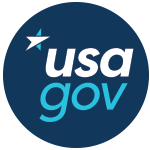Although American Indians and Alaska Natives make up a relatively small percentage of the total population of Virginia, they are disproportionally affected by social issues that are widely recognized as contributing factors to substance abuse, addiction, and overdose.
According to the 2015 census, there are 6.6 million people who identify as American Indian or Alaska Native, representing roughly 2% of the total population. Native Americans are more than twice as likely to live in poverty compared to the general population (26% vs. 12%). More than 1 in 3 Native Americans lack health insurance coverage, and the average life expectancy for this population is 6 years lower than the national average.
The Stats and Facts
Substance abuse, the use of alcohol and/or other drugs in a way that is harmful to oneself or others, poses serious health and social concerns for AI/AN individuals and families.
Among current drinkers, AI/ANs had the highest rates of past year heavy daily drinking (over one drink per day for women and over two drinks per day for men) compared to all other races (21.9% vs. 15.7%); also AI/ANs had the highest rates of alcohol dependence and abuse (20.8% vs. 12.9%). Compared to all races, AI/ANs had the highest past year prevalence of any alcohol use disorder (12.1% vs. 8.5%), any drug use disorder (4.9% vs. 2.0%) and comorbid (alcohol and drug use) disorders (3.5% vs. 1.1%). Of all AI/AN deaths, 11.7% resulted from alcohol-attributable deaths (AAD) compared to 3.3% for the general population; AI/ANs lose more potential years of life (36.3 years) versus the general population (29.4 years) due to AADs.
Urban American Indian and Alaska Natives and Addiction
Urban American Indian and Alaska Natives AI/ANs living in urban areas are a diverse and growing population. Over the past three decades, the population of AI/ANs has increased within urban areas, partly due to AI/ANs relocating from reservation and rural settings.
Urban AI/ANs include members, or descendants of members, of many different tribes. For example, represented tribes may or may not be federally-recognized and individuals have varying degrees of ties to their AI/AN historical, cultural or spiritual backgrounds. The population as a whole is highly mobile; individuals may travel back and forth between their tribal communities or reservations on a regular basis.
Generally, urban AI/ANs are spread out within the urban center rather than localized within one or two neighborhoods. Thus they are often not easily seen or recognized by the wider U.S. population. This "invisible" Indian population makes up more than 71% of all AI/ANs living in the U.S.
Preference for Traditional Treatments for AI/AN Addicts
One of the take home messages that is evident from reading and analyzing numerous reports is that substance abuse programs that provide services to urban AI/ANs emphasize the need for traditional-based treatments, e.g., sweat lodge ceremonies, drumming, regalia making, etc. Many rehab facilities have taken this to heart, and have begun incorporating them.
Another important theme among the findings included the provision of culturally-tailored care by many programs. Thus, these observations suggest that urban AI/ANs benefit from an integrated approach that allows for the provision of traditional-based practices, which indicates further justification for more funding and treatment to address this health-related disparity existing in the U.S.
Furthermore, urban AI/AN leaders have identified an integrated approach as what is needed to meet the substance abuse prevention and treatment needs of this population. This report, rightly so, also supplies a policy component emphasizing the need for allowing for these services to be provided in order to ensure that culturally-relevant care is available to this population.
Getting Help
If you need help, rest assured there are multiple facilities with their doors open for you. Gone are the days where treatment was solely conducted in English, effectively freezing out persons who were not fluent in the language. Simply reach out to one of the many centers in Virginia and get professional attention.










